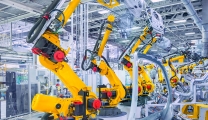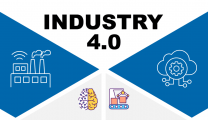What is production management and why is it important to businesses?
Production management is an essential function of any manufacturing or production-oriented organization. It refers to the planning, organizing, controlling, and coordinating of resources, materials, and people to facilitate the production of goods and services that meet customer demand and fulfillment. Production management aims to optimize the production process, reduce costs, improve quality, and enhance efficiency.
Effective production management bolsters profitability by minimizing waste and optimizing processes, ensuring high-quality outputs, and aiding in staying abreast of industry trends. Furthermore, it promotes environmental responsibility by reducing production waste, thus contributing to sustainability. It requires clear goals, effective plans, quality control, and continuous performance monitoring for successful implementation.

Production management is an essential function of any manufacturing organization
Types of Production Management
The core components of production management serve as its backbone, enabling the seamless functioning of production processes:
1. Job Production: this type is best suited for manufacturing customized, made-to-order products. Here, workstations are flexible and can handle a variety of operations. The production schedule is dictated by customer orders, and each product may require a unique set of processes and workflow. This system offers high flexibility but may have longer lead times and higher costs due to its bespoke nature. Another popular concept, called Project Production, is also a kind of job production, a complex system used for large-scale. It involves a series of interconnected tasks, each with its start and end times, often managed using project management methodologies. It provides a high level of customization but often involves high costs and long production times.
2. Batch Production. In this system, products are manufactured in groups or batches. Each batch goes through the entire production process together before the next batch begins. This type of production is common in industries like bakery, pharmaceuticals, and clothing where similar products are produced together. It balances the flexibility of job shop production with the efficiency of mass production.
3. Mass Production, on the other hand, focuses on producing large volumes of identical products. The production line is set up to maximize efficiency and minimize costs. This system is prevalent in industries like automobiles and electronics. While it offers high efficiency and low production costs, it lacks the flexibility to cater to individual customer preferences. Continuous Production, a kind of mass production, involves an incessant production process for commodities that are highly standardized, like oil, gas, or electricity. The production never stops unless there's maintenance or a breakdown.
Components of Production Management
The core components of production management serve as its backbone, enabling the seamless functioning of production processes:
1. Product Design: It's a creative and iterative process aiming to develop new products or improve existing ones. This process involves everything from the generation of an idea to the development of a concept, and from testing the prototype to the final manufacturing stage. Product Design ensures the end product meets consumer needs and expectations while being feasible and cost-effective to produce.
2. Process Design. This involves planning and deciding the course of production. It's about determining the most efficient workflow, the equipment needed, and the sequence of tasks to be performed. Process Design ensures that the production process is as streamlined and efficient as possible, reducing waste and optimizing the use of resources.
3. Production Planning and Control: This component acts as the regulatory mechanism of the production system. It involves everything from resource allocation to scheduling, and from coordination of various activities to quality control. The goal here is to ensure that the production process runs smoothly, according to the plan, and that any deviations or problems are quickly identified and addressed.
4. Quality Control. It is a crucial part of production management that ensures products meet established quality standards and customer expectations. Quality control involves implementing various techniques and processes to check the quality of raw materials, components, and finished products at different stages of production. Regular inspections, testing, and monitoring are conducted to identify and correct any defects or deviations from the set quality standards. Quality control not only helps maintain consistency in product quality but also helps reduce wastage, improve customer satisfaction, and maintain a company's reputation.
5. Maintenance Management: It involves the systematic planning, scheduling, and execution of maintenance activities to ensure that production equipment, machinery, and infrastructure remain in optimal working condition. Effective maintenance management is essential for reducing downtime, preventing equipment failure, and extending the service life of the assets. It includes preventive maintenance, predictive maintenance, and corrective maintenance approaches. By implementing a robust maintenance management program, companies can minimize production disruptions, improve operational efficiency, and reduce overall production costs.

Maintenance Management is one of key components in production management
Which concepts can be used to increase production management efficiency?
As a manufacturing manager, your primary goal is to maximize production efficiency while minimizing costs. This can be achieved by implementing the following strategies:
1. Lean Manufacturing
Lean Manufacturing is a management philosophy aimed at eliminating waste and improving efficiency in production processes. It's centered around creating more value for customers with fewer resources. The core principles of lean manufacturing include identifying value, mapping the value stream, creating flow, establishing pull, and continuously seeking perfection. By implementing these principles, organizations can reduce lead times, inventory, and costs while increasing productivity, customer satisfaction, and profits.
2. Six Sigma
Six Sigma is a data-driven methodology focused on improving the quality of products and services by reducing process variability and defects. It employs a disciplined, statistical approach to identify the root causes of defects and implement effective solutions. Six Sigma projects follow two methodologies: DMAIC (Define, Measure, Analyze, Improve, and Control) for process improvement and DMADV (Define, Measure, Analyze, Design, and Verify) for process design. This method can help organizations increase customer satisfaction, reduce costs, and improve overall performance.
3. Total Quality Management (TQM)
Total Quality Management is a management approach that emphasizes continuous improvement and customer satisfaction. It's based on the belief that every employee, from top management to frontline workers, has a role in ensuring quality. Key principles of TQM include customer focus, continuous improvement, employee involvement, and management commitment. TQM provides a framework for organizations to systematically analyze and improve their processes, products, and services to meet customer needs and expectations.
4. Just-in-Time (JIT) Production
Just-in-Time Production is a production strategy aimed at reducing inventory levels, lead times, and waste by producing goods only when they are needed. JIT emphasizes the synchronization of production processes with demand, ensuring that materials and products are available just as they are needed, and no excess inventory is held. By implementing JIT, organizations can reduce costs, improve efficiency, and respond more quickly to changes in customer demand.
5. Material Requirement Planning (MRP)
Material Requirement Planning is a computer-based inventory management system that helps organizations plan and manage their production processes. MRP calculates the materials, components, and sub-assemblies needed to produce a product, determines the optimal order quantities and schedules, and generates work orders and purchase orders accordingly. This system enables organizations to maintain appropriate inventory levels, reduce lead times, and minimize stockouts and overstocks.
How do businesses leverage Technological Advances in Production Management?
Technological advancements have revolutionized the manufacturing industry, making it more efficient than ever before. Production management can take advantage of technology to increase productivity in various ways:

1. Automation and Robotics
Automation and robotics have significantly transformed production processes by performing repetitive, labor-intensive tasks more efficiently and accurately than human workers. Automated systems can increase production speed, improve product quality, and reduce costs. Robotics allows for greater flexibility in production, enabling organizations to adapt more quickly to changes in demand and market conditions.
2. Artificial Intelligence and Machine Learning
Artificial Intelligence and Machine Learning have the potential to revolutionize production management by enabling smarter, more efficient decision-making and process optimization. AI-powered systems can analyze vast amounts of data, identify patterns, and make predictions, helping organizations improve production planning, scheduling, and quality control. Machine learning algorithms can also optimize production processes by identifying inefficiencies and suggesting improvements.
3. Internet of Things (IoT)
IoT technologies can enable the collection of data from connected machines and equipment to optimize production processes. Production managers can use IoT data to gain insights into equipment performance, identify inefficiencies, and take corrective action requests. IoT-enabled sensors can monitor various aspects of the production process, including temperature, pressure, and humidity, providing real-time data that can be used to identify patterns and optimize workflow.
4. Production management system
Production management systems have revolutionized production management by providing real-time data, advanced analytics, and seamless communication between different systems and departments. It enables better production planning, scheduling, and tracking, and facilitates quick decision-making and problem-solving. Examples include Enterprise Resource Planning (ERP) systems, Manufacturing Execution Systems (MES), and Warehouse Management Systems (WMS).
Ultimately, the goal of analyzing and improving production flows is to create a more streamlined and efficient process that delivers high-quality products to customers while reducing costs and increasing profitability. By adopting a continuous improvement mindset and utilizing the right tools and resources, manufacturing managers can achieve these objectives and take their businesses to the next level.












Replies to This Discussion